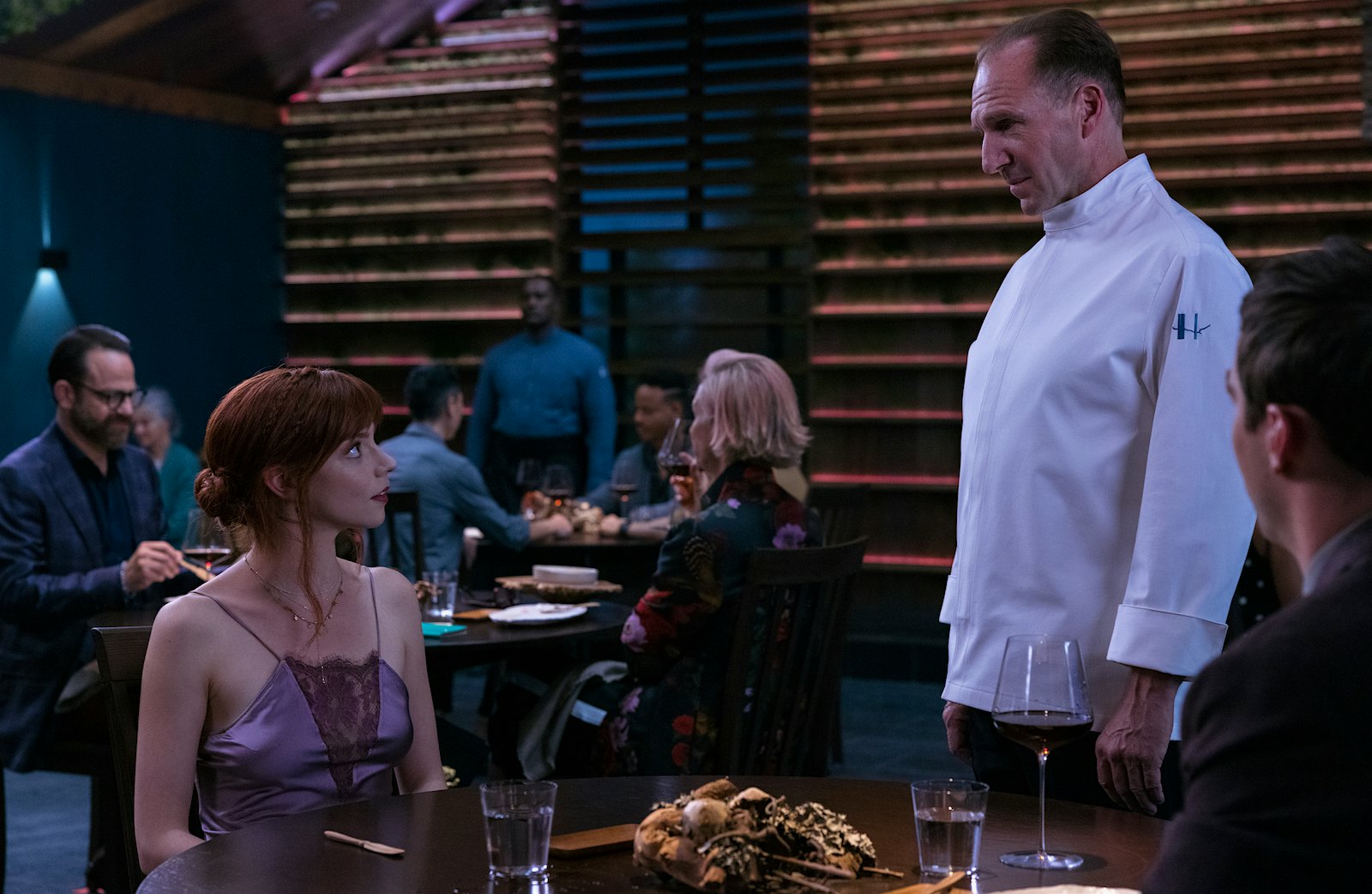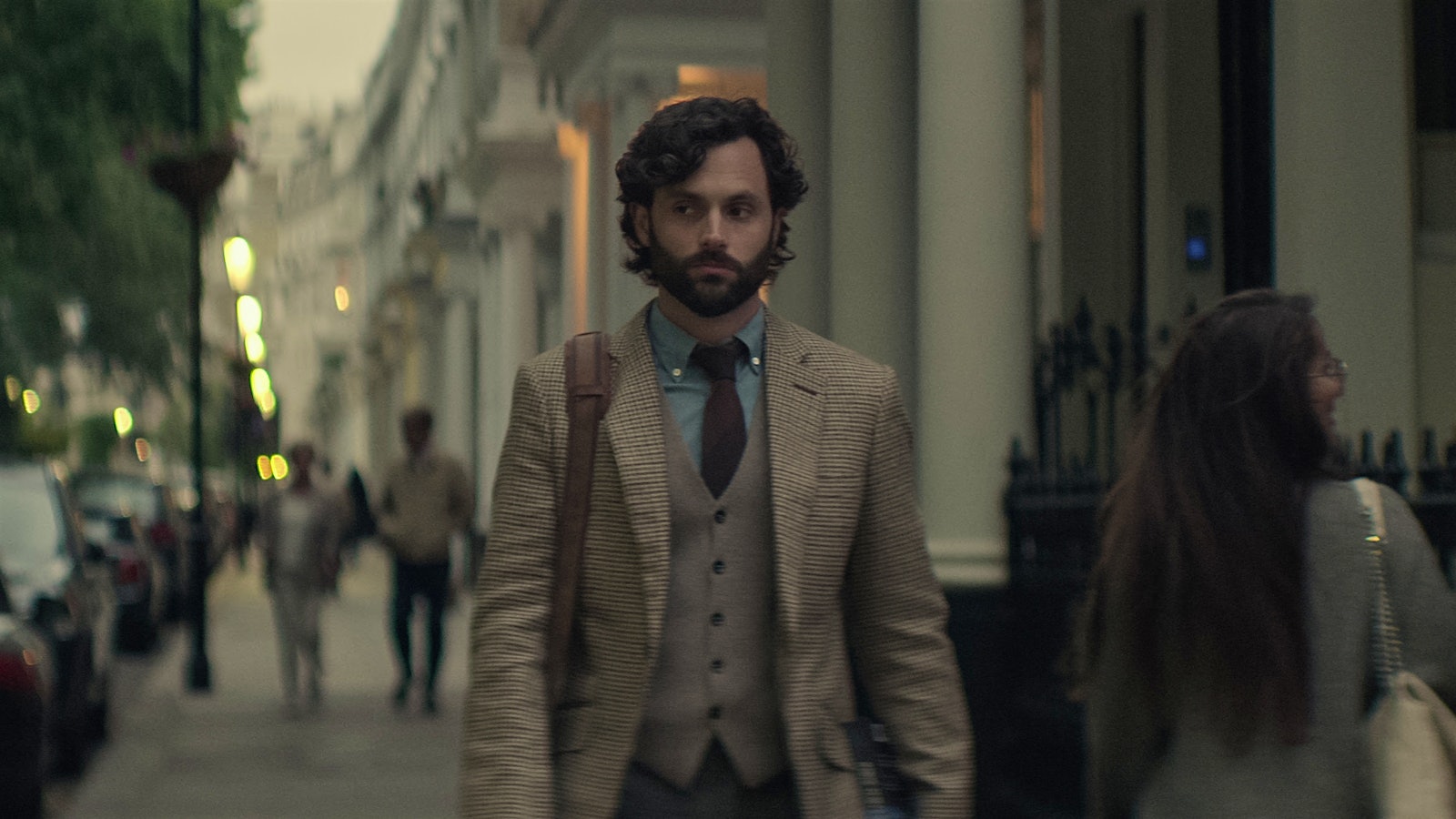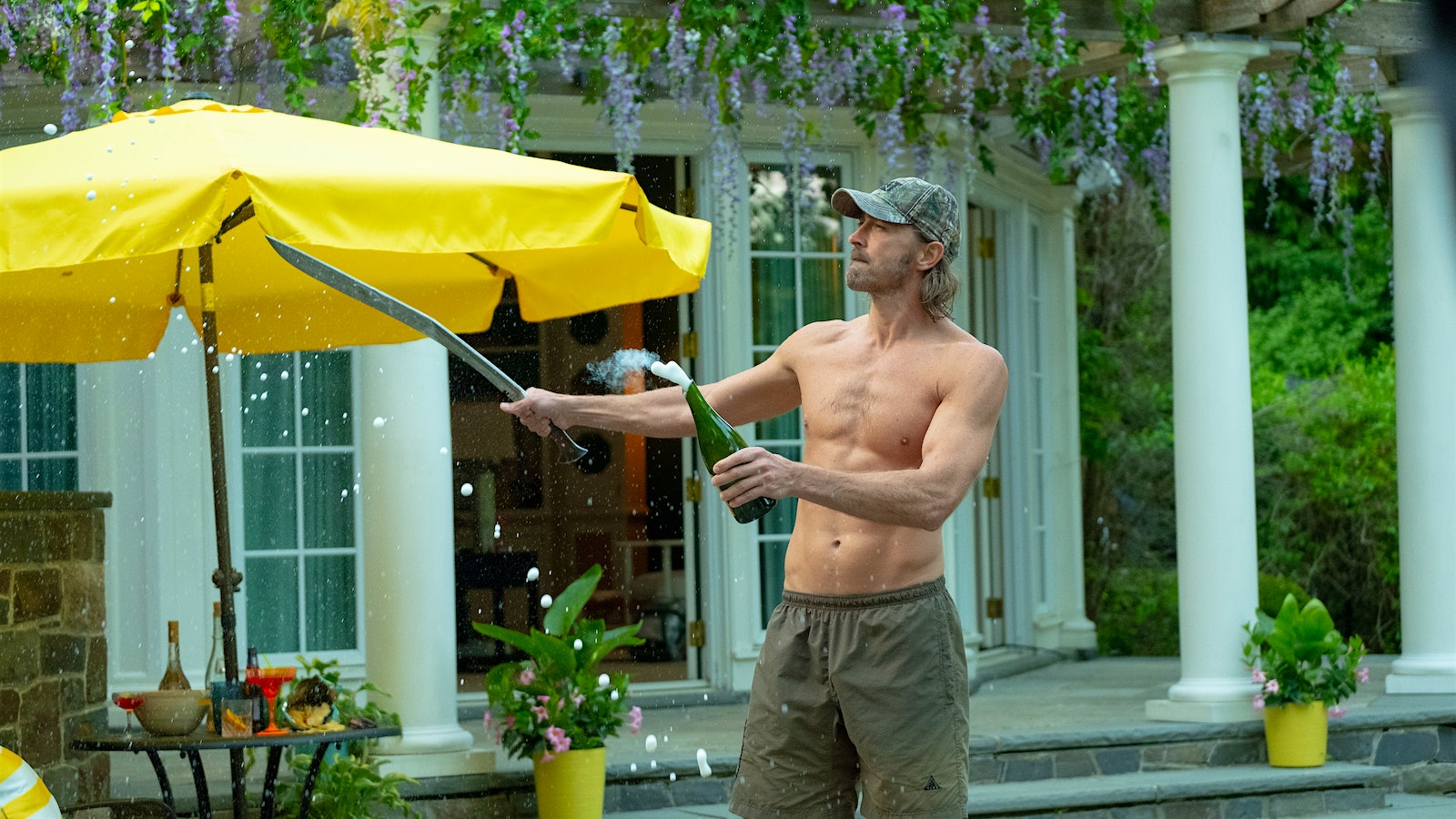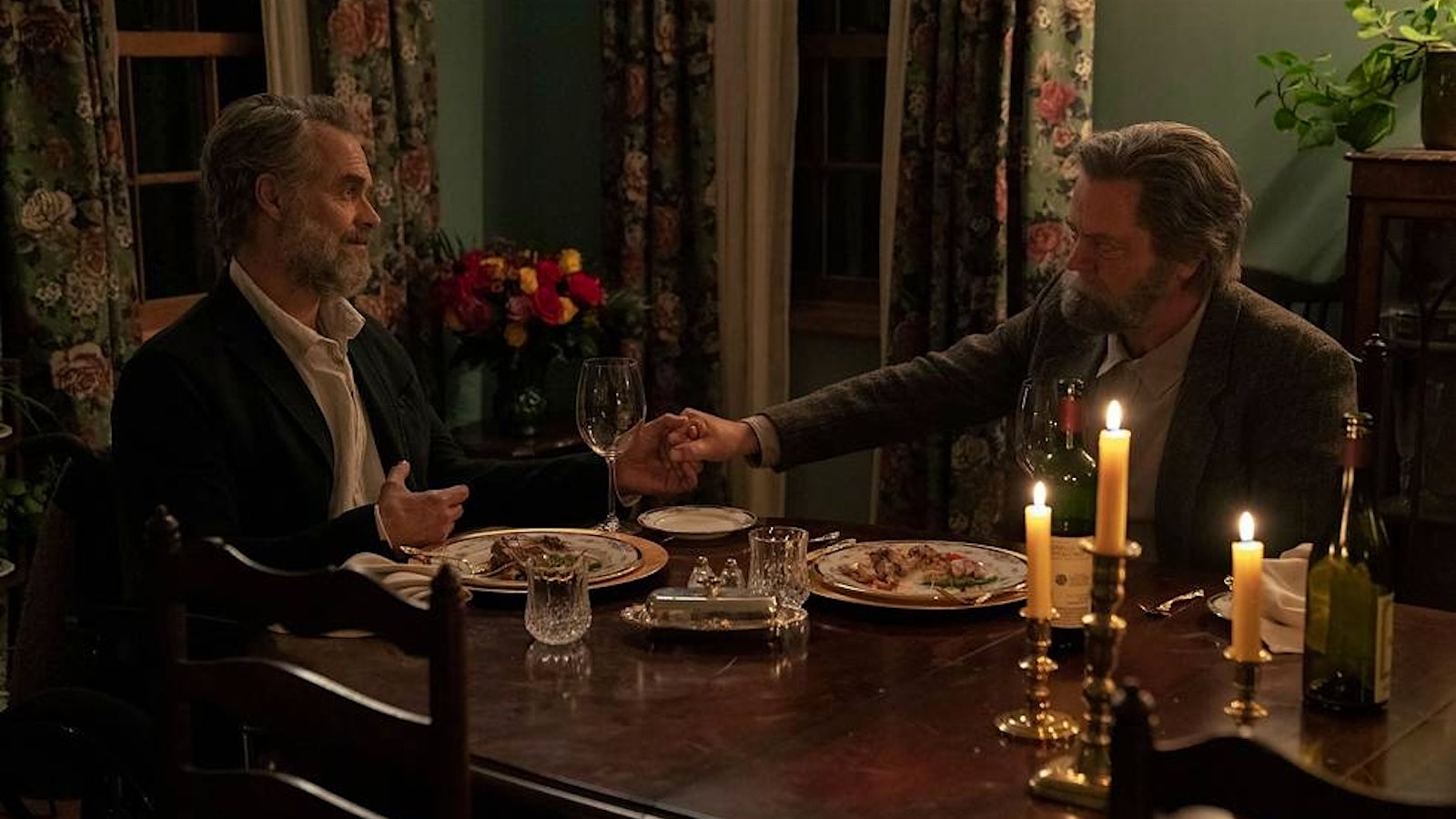On-Screen Menu: Our Editors’ Latest Favorite Starring Roles for Wine
It’s 2023 and we’ve pretty much all managed to venture back out into the world at this point, but that doesn’t mean we’ve stopped devouring dramatic wine plots and charismatic chefs on TV and in the movies.
Among our recent thrills were bottle-spotting while watching The Menu (does anyone really make wine from one row of vines?), satisfying our hunger for haute and less-haute cuisine with ode to Chicago Italian beefs The Bear (while also asking ourselves why this version of Chicago has health-inspection letter grades) and being utterly devastated by The Last of Us (and the presumed sadness of drinking a 20-year-old Beaujolais Villages).
If you’re thirsty for more wine on screen, check out our complete Film and TV index and our pandemic essential viewing roundups.
Without any further delay, here are some of our editors’ favorite recent finds and re-discoveries. Fair warning: Spoilers ahead!

The Menu
(HBO Max)
When The Menu was released in November 2022, it immediately became the most talked about comedy-horror vehicle for wine since … well, since Bodies, Bodies, Bodies came out three months earlier. The Menu has received plenty of press for its brutally satirical depiction of an exclusive island restaurant named Hawthorn and charging $1,250 a head for a one-time-only, literally-to-die-for tasting menu, with wine pairings, of course.
The attention to the menu of The Menu has been well-deserved—chef Dominique Crenn served as the film’s food designer—but here at Wine Spectator we’re trained to cast our critical eye on wine service, and The Menu delivers, starting with the sommelier, hilariously played by actor Peter Grosz (half of the two guys at the Sonic drive-in routine).
With utmost seriousness, the wine pairings (and there’s a whole Reddit thread dedicated to them) begin with a dish called “the Island,” a single scallop “placed on rocks from the shore, covered in barely frozen, filtered seawater which will flavor the dish as it melts.” It’s paired with a Chardonnay, “from our friends at Caroline Morey, a Chassagne-Montrachet premier cru from 2014. Not just a single vineyard. A single row of vines.”
So what’s real and what’s not here? Caroline Morey is a very real person and a very excellent winemaker in Burgundy; she shares a winery in Chassagne-Montrachet with her winemaking husband, Pierre-Yves Colin. Her top Chassagne-Montrachet, Les Caillerets, goes for a few hundred dollars a bottle. It’s made from more than a single row of vines, but not much more—just a single acre.
But could you make a wine from a single row of vines? Sure. Pretty much the smallest volume of wine you could conceivably make for bottling would be a single barrel (big fancy charity wine auctions feature single-barrel bottlings all the time). Your typical Burgundy barrel holds 228 liters of wine, or about 25 cases worth, but how many vines does it take to produce enough grapes to fill a 228-liter barrel? Well, you have to do some fuzzy math involving the average weight per grape bunch (let’s say a quarter-pound) and the number of clusters per vine (heavily influenced by pruning method and vine spacing), but according to my friend Kendall Jackson, it takes about 100 vines to make one barrel of wine, or about three vines per bottle.
Back at Hawthorn, the next course was chicken tacos and Pinot Noir. “That’s a 2013 Pinot Noir from Ross Cobb,” the sommelier informs us. “We hyper-decanted it with an immersion blender to awaken it from its slumber. Slavonian oak, rich cherry and tobacco notes, and a faint sense of longing and regret. Enjoy.” Once again, Ross Cobb is a very real winemaker specializing in Sonoma Coast Pinot Noirs, but his reds are aged in French oak barrels, about one-third new, not Slavonian. And Cobb’s wines aren’t known to induce any more or less regret than any other adult beverage.
As for the “hyper-decanting,” that was all the rage a decade ago when Modernist Cuisine author Nathan Myhrvold prescribed decanting wine by pouring it into a blender and running it for 30 to 60 seconds. “Even legendary wines, such as 1982 Château Margaux, benefit from a quick run through the blender,” Myhrvold wrote. Didn’t really catch on.
Our final Menu pairing of note, with roast filet and bone marrow, is “Domaine Breton biodynamic Cabernet Franc. No added sulfites, bit of barnyard funk, a wonderful match with roasted proteins.” The real Domaine Breton is run by Catherine and Pierre Breton, and their Cabernet Franc vines are farned biodynamically and made without added sulfites. They’re also fermented with native yeasts and bottled unfiltered. And yes, their Cabernet Francs are a wonderful match with roasted proteins. 10/10.
Sadly, there’s no wine pairing with the final course, a sort of Midsommar with s’mores performance piece—at Hawthorn, dessert consumes you! “Everyone dying was my pitch, actually,” the sous chef has already informed us. “I’m super proud of it.”—Robert Taylor

You
(Netflix)
Foodie streaming fans already devoured the first 3 seasons of You, the Dexter meets Gossip Girl psychological thriller in which antihero, master antique book restorer/counterfeiter and serial killer Joe (Penn Badgley) plays cat and mouse with love interest Love (Victoria Pedretti), a pastry chef who shares his taste for murder.
Love is out of the picture in season 4, in which our antihero has embedded himself in British high society. Joe levels up his forgery skills in a Clue-inspired episode 4 plot at Lady Phoebe’s (Tilly Keeper) family estate, Hampsbridge House (Knebworth House). As a gift for the hostess, he forges a bottle of aged Burgundy, a fictional Le Ruisselet des Tappes Grand Cru 1971. If you’re curious, 1971 was not a particularly compelling vintage for Burgundy, but neither Lady Phoebe nor her guests seemed to notice.—R.T.

Bodies, Bodies, Bodies
(Amazon Prime, YouTube)
You write one story about a haunted TV wine cellar and the next thing you know you’re on the horror beat, apparently. Bodies, Bodies, Bodies is another of production company A24’s many excellent dark and satirical horror films, but as those go, this one uncorks more laughs than most thanks to, among others, Pete Davidson in the role of Victim No. 1. If you enjoy A24 films, as I very much do, then you’ll probably love this one. If you’re not into slashers, you probably won’t! Why are we even talking about it? Cryptic spoiler: The Veuve Clicquot did it.—R.T.

The Last of Us
(HBO Max)
Episode 3 of The Last of Us, based on the blockbuster video game franchise, finds humanity in drinking wine and enjoying the finer things. Diverting from the central plotline of Joel (Pedro Pascal) and Ellie (Bella Ramsey) hitchhiking across a fungi-zombie-infested post-apocalyptic United States, episode 3 focuses entirely on the relationship between Bill (Nick Offerman) and Frank (White Lotus’ Murray Bartlett), two men attempting to live as normally as possible despite the circumstances, joined by the simple pleasures of good food and wine.
The episode begins with Bill in the immediate aftermath of the zombie apocalypse. Bill, a “doomsday prepper,” has secured his home and surrounding town with myriad booby traps and security cameras, and enjoys the inventory of every shop in town, even finding time to enjoy a peaceful bottle of wine and a home-cooked meal most nights. That’s until Bill meets Frank (after Frank quite literally falls into one of his traps). The reclusive Bill begrudgingly allows Frank in for dinner and prepares an impressive meal of what looks to be confit-style rabbit with root vegetables paired with a bottle of 2002 Louis Jadot Beaujolais Villages. “A man who knows to pair rabbit with Beaujolais,” Frank admires.
The episode time jumps, pinpointing different parts of Bill and Frank’s lives together: facing pillagers, making allies, growing tired of their seclusion, while still holding strong to their life together and love of each other. But what stands out to me is how each moment is pinpointed by food, the sheer rarity of fresh strawberries, dinner parties, and bottles of Beaujolais during those unthinkable times.
Some critics suggest it’s implausible Bill would have stored so much wine, or that he made it a priority—his first stops when gathering supplies and prepping his house for the long haul were Home Depot and the local liquor store, where he scored a case of Caymus. Or that they enjoy the same bottle of Beaujolais on their last night together, 20 years later—a wine that Wine Spectator senior editor James Molesworth pegged as “drink now” back in 2003. But to me, it’s what makes this episode so heart-wrenching and compelling. Despite it all, Bill and Frank are choosing to find pleasure and to still live life while the world burns around them. These things are never that frivolous. —Julia Larson

Emily in Paris
(Netflix)
This past December, Chanel-toting American expatriate Emily Cooper (Lily Collins), returned for season 3 of Emily in Paris. To catch you up: Emily has traveled from Chicago to Paris to pursue a new role at a French marketing company, Savoir, finding professional success, friendship, Château Malartic-Lagravière and even love along the way. That includes building an on-again, off-again acquaintance, and romantic rivalry, with local gallerista Camille (Camille Razat), who just so happens to be the daughter of the owners of an Épernay-based Champagne house. In season 2, Emily partnered with the couple on Champére, a bubbly wine made specifically for spraying (because it didn’t taste so great). You can even buy the infamous de Lalisse Champère in real life, from the Boisset Collection ($70 per 3-pack; this version is intended for “toasting, sipping and spraying!”).
In season 3, Emily discovers Kir Royales and is inspired to re-market Champère as a canned version of the Champagne- and crème de cassis–based cocktail (sadly, there’s no real-life version of that … yet). New episodes are as fun, romantic and occasionally dramatic as fans could want, offering even more glitz, fashion and breathtaking scenery. The latest season also features high-class Provençal cuisine, bistro dining and, of course, plenty of wine.—Collin Dreizen
The Bear
(FX, Hulu)
The Bear stars Jeremy Allen White as Carmy, a young chef who ran “the best restaurant in New York” and just inherited his late brother’s Chicago Italian beef joint. Swinging from earning Michelin stars to slinging sloppy sandwiches, the show’s pace evokes the anxiety of cooking and restaurant work at all levels—the non-stop feast or famine, the onslaught of roadblocks, and the loss of personal boundaries. Every episode feels like Carmy is finally going to bubble over either from the nerves of the business or pure grief.
Despite it all, the show is still incredibly loving. With its relatable ensemble including the talented Ayo Ediberi and Ebon Moss-Bachrach, we get to see the restaurant slowly get serious. As the season progresses, not only do we see tiny details like the spice-rack makeover and painters-tape labeled pint containers, but the chefs actually start seeing Carmy’s vision come to life. Luscious chocolate cakes and cola-braised short-ribs tempt the viewers and remind everyone of the rewards of restaurant work, no matter how anxiety inducing. Season 2 of The Bear is slated to debut later this year.—J.L.
Rome
(HBO Max)
For decades, HBO has proven itself an originator and master of gritty TV series about charismatic but morally complicated characters, from The Sopranos to Boardwalk Empire to Curb Your Enthusiasm (bear with me) to Rome. Co-produced by the BBC, Rome triumphed among historical dramas when it premiered in 2005. Across two seasons and with an ensemble cast of talented actors, the series dramatized the final years of the Roman Republic, beginning with the conflict between Julius Caesar and Pompey and ending with Augustus Caesar’s transformation into an emperor.
Upon a recent rewatch, I can confirm: Rome is as excellent as I remember it. That said, I hadn’t realized just how many foodie moments there were on the show. Rome is practically punctuated by them, whether it’s Atia of the Julii (Polly Walker) sipping wine (perhaps the famed Falernian?) or Mark Anthony (James Purefoy) tucking into some delicious-looking bread drenched in somehow even more delicious-looking olive oil. Altogether, Rome’s writers give us more detail on what Romans ate and drank than you would probably expect it to. But then, they kind of had to. If you’re going to humanize legendary historical figures, there’s no better method than reminding us that, hey, they ate (sort of) just like us!—C.D.